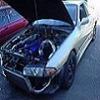Apexi pfc boost controller instructions
Announcements
-
Similar Content
-
Latest Posts
-
Just as a thought, if it's in neutral, thats your drive line disconnect, not the clutch. Clutch slip at the dyno with pedal fully out, is actually adding a second disconnect. So it's not a clutch issue if you're in neutral. Just a bit of friction dragging the output around while in the air.
-
The HG high flow is excellent, and costs about the $$ you're talking about. But it, and probably every other highflow, uses a diffeent core than the original turo, and the original Hitatchi core is quite long. So, I think it is inevitable that there is likely no such thing as a highflow that just "bolts on" with no other effort required. And the same is likely true for HG's outright replacement "bolt on" turbos (the ATR things). And the same is likely true for anything similar from elsewhere. I have no idea if the cheap Chinese/Taiwanese complete turbos from eBay/Temu/etc are as bolt on as they claim. I mean, they claim the bolt onto the NAs as well as the turbos, and we know that can't be "bolt on". But it wouldn't matter because I'm not buying a $169 4 psi turbo for anything other than a paddock basher.
-
Bummer...yeah i "need" something to "ease" up the work and for my driving it would be enough. Iam counting the tune "without" turbo. I do not mean "cheap" like something from Temu around 200 USD, "Cheap" is something around 1000 USD?
-
Starter motors used to use the weight of metal (magnets) to provide torque. Now they use (more) current instead. This. It's completely normal.
-
So thing that had me stumped, but I think is OK....is that when it was up in the air, in neutral I had it running to bleed to coolant while I put the wheels back on. I noticed the rears were turning (slowly) which I'd never seen before 20250928_163512.mp4 Because there had been an issue with clutch slip due to pedal adjustment on the dyno, I assumed there was still and issue so spent some quality time upside down under the dash adjusting the pedal....but no matter what I did the wheels still turned in neutral. Even disconnected the master cylinder to pedal rod and same. In despair, I even removed the clutch slave so there was no chance of any preload causing it.....still happened. So either: 1. Something is not right in the bellhousing, or 2. Its a thing sometimes with cold, thick gearbox oil Internet says it might be 2, I hope so!
-





Recommended Posts
Create an account or sign in to comment
You need to be a member in order to leave a comment
Create an account
Sign up for a new account in our community. It's easy!
Register a new accountSign in
Already have an account? Sign in here.
Sign In Now